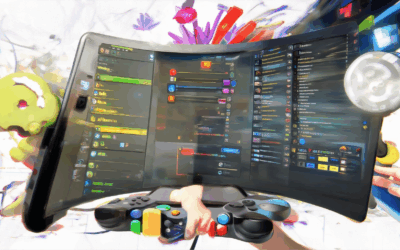Game patches are a cornerstone of modern gaming, ensuring that players always have access to the latest features, bug fixes, and improvements. In today’s fast-paced gaming world, frequent updates and patches are essential to keep games running smoothly and providing players with the best experience possible. Whether you’re playing on PC, consoles, or mobile devices, understanding the nuances of game patch updates is crucial for staying connected to your favorite games. This article delves into the differences between game patches and updates, explores the process of patching, and examines the broader implications of regular updates. By the end of this guide, you’ll have a comprehensive understanding of what game patch updates entail, how they impact gameplay, and why they remain a vital part of the gaming ecosystem.
Key Takeaways
- Understanding the Process: Patch updates involve identifying issues, creating fixes, and distributing them through automatic or manual means, ensuring seamless installation across various platforms.
- Types of Patches: Patches include hotfixes for urgent fixes and service packs for broader updates, catering to different urgency levels.
- Platform Differences: Patches vary in delivery methods, from automatic updates on PCs and consoles to wireless updates on mobile devices.
- Security Focus: Regular patches are crucial for fixing vulnerabilities and enhancing security, protecting users from potential threats.
- User Control: Users often have control over update schedules, balancing convenience with performance needs.
- Gaming Benefits: Patches fix bugs, add new features, improve multiplayer compatibility, and keep games updated, ensuring a smooth and evolving experience.
- New Features and Content: Patches regularly introduce new content and gameplay mechanics, keeping games fresh and engaging.
- Performance and Optimization: Updates optimize performance, enhancing speed and efficiency for a better user experience.
- Compliance and Standardization: Patches help meet regulatory standards and maintain system uniformity across different versions.

Understanding Game Patches and Updates
A game patch and an update are both ways to modify a video game, but they differ in scope, frequency, and purpose. Below is a detailed comparison:
| Aspect | Patch | Update |
|---|---|---|
| Frequency | Monthly or more frequent | Less frequent, often quarterly or seasonally |
| Size | Small (around 50MB-200MB) | Larger (can be several hundred MB to GB) |
| Purpose | Fix specific issues, balance gameplay, or add minor features. | Add major content, features, or adjustments based on player feedback. |
| Examples | Bug fixes, weapon balances, minor QoL improvements. | New maps, seasonal events, major feature additions, or engine upgrades. |
| Impact | Quick and focused improvements. | Significant changes that evolve the game experience. |
Why Are Both Important?
- Patches: Keep the game stable, fix bugs, and maintain balance. They ensure players have a smooth experience without major disruptions.
- Updates: Bring new content, features, and improvements to keep the game fresh and engaging. They reflect player feedback and evolving game needs.
When to Expect Them:
- Patches: Usually released as soon as issues are identified, ensuring rapid response to player concerns.
- Updates: Often planned in advance, aligning with developmental cycles and player expectations.
By understanding the differences between patches and updates, players can better manage their experience and stay informed about the game’s evolution.
What is Patching when Updating a Game?
A patch refers to a software update released by game developers to fix issues, add new content, or improve performance.
- Bug Fixes: Patches often address bugs causing crashes, freezes, or gameplay issues.
- New Features: They may introduce expansions, DLCs, or new modes.
- Performance Improvements: Enhancing speed, graphics, or compatibility with newer hardware.
- Security Updates: Fixing vulnerabilities to protect against hacks or breaches.
Patches are downloaded through platforms like Steam, Apple App Store, or the game’s official website. Regular updates ensure a smoother experience and keep players informed about changes.

Patches vs. Updates
Patches and updates are two distinct methods used to maintain and improve software or applications. While they share common goals of fixing issues and enhancing functionality, they differ in scope and implementation.
| Aspect | Patches | Updates |
|---|---|---|
| Purpose | Fix specific issues or vulnerabilities | Address broader issues, add features, and improve performance |
| Examples | Bug fixes, security patches, minor tweaks | New features, performance optimizations, compatibility improvements |
| Impact | Resolves specific problems without major changes | Can significantly change application behavior and user experience |
| Frequency | Regular, often based on detected issues | Less frequent, aligned with product roadmap |
| Scope | Narrow focus on specific areas | Broad focus on overall system health and improvements |
In summary, patches are like quick fixes for specific problems, while updates are more comprehensive changes aimed at improving the overall functionality and user experience of a software or application.

How Do Patch Updates Work?
A patch update is a method used to deliver fixes, improvements, or new features to software, applications, or games. Here’s a step-by-step explanation of how patch updates function:
- Identification of Issues : Developers identify problems or gaps in the current software version through user feedback, internal testing, or monitoring.
- Creation of Patch : Based on identified issues, developers prepare a patch file containing the necessary changes, fixes, or additions.
- Distribution of Patch : The patch is then distributed via various channels:
- Automatic Updates : Many platforms like Steam, Xbox, or mobile app stores automatically download and install patches when detected.
- Manual Download : Users may manually download patches from official websites or forums.
- Installation Process :
- Application Launchers : Platforms like Steam or the Apple App Store handle patch installation seamlessly during launch.
- Background Updates : Some systems apply patches in the background without interrupting gameplay or operation.
- Types of Patches :
- Hotfixes : Immediate fixes for critical issues released as soon as possible.
- Service Packs : Larger updates containing multiple fixes and enhancements rolled out over time.
- Platform Differences :
- PC and Consoles : Regular updates are common, often requiring a restart to apply changes.
- Mobile Devices : Updates are typically delivered wirelessly, with users prompted to install when a new version is available.
- Security Considerations : Patches frequently include security fixes, making regular updates essential for protecting devices or software from vulnerabilities.
- User Control : Some systems allow users to schedule updates or delay installations, balancing convenience with potential performance impacts.
By following these steps, patch updates ensure software remains optimized and secure, providing users with the latest features and bug fixes efficiently.
Patch Meaning in Gaming
A patch in gaming refers to a software update released by the game’s developer to fix bugs, enhance gameplay, and introduce new features. These updates aim to improve the game’s performance, add content, and ensure a smooth experience for players.
Key Aspects of Patches in Gaming:
- Bug Fixes :
Patches are often used to resolve issues such as crashes, freezes, or glitches that players encounter. Ensuring stability is a primary reason for releasing updates. - New Features :
Beyond fixing problems, patches can introduce new content, levels, characters, or gameplay mechanics, keeping the game fresh and engaging. - Multiplayer Compatibility :
In multiplayer games, patches are crucial for maintaining consistency across different platforms and versions, ensuring seamless gameplay experiences. - Regular Updates :
Developers release patches at varying intervals, depending on the game’s needs. Some games may receive frequent updates, while others may have fewer. - Types of Patches :
Patches can be categorized into minor (for quick fixes) and major (for significant changes), helping players anticipate what to expect. - Player Notification :
Notifications through emails or in-game interfaces alert players about available patches, often allowing automatic downloads for convenience. - Security Enhancements :
Patches frequently include security fixes to protect against vulnerabilities, safeguarding player data and maintaining trust in the game.
Examples of Patch Usage:
- Minecraft : Regularly updated with new biomes, items, and event modes.
- League of Legends : Known for frequent patches to balance champions and improve gameplay.
By continuously updating their games, developers ensure that players enjoy a high-quality, evolving experience.

Purpose of Patching
Patching serves several essential purposes in software and systems:
- Fixing Bugs and Vulnerabilities : Patches are released to address issues or vulnerabilities discovered after initial release. These fixes prevent potential security breaches and improve system reliability.
- Adding Features : Updates often introduce new features or enhancements, allowing users to benefit from improved functionality.
- Improving Performance : Patches may include optimizations for better performance, such as enhanced memory management or faster processing.
- Ensuring Compatibility : Patches are crucial for maintaining compatibility with new hardware or software versions, ensuring smooth operation.
- Enhancing Security : A primary purpose of patches is to protect against known security threats and vulnerabilities, safeguarding data and systems from exploitation.
- Meeting Compliance Requirements : Organizations often apply patches to comply with industry regulations, avoiding potential penalties for non-compliance.
- Standardization : Consistent patching processes help maintain uniformity across different system versions, fostering a standardized approach to updates.
By addressing these aspects, patches contribute significantly to system health, functionality, and security.




0 Comments